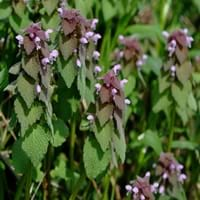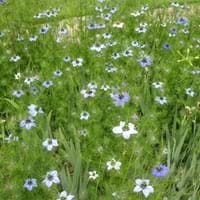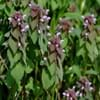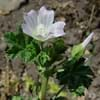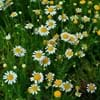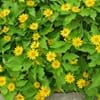Type
Flowering Plants
Flowering Plants
Origin
World/Pandemic, Europe, Asia
Southern Europe, Northern Africa, Western Asia
Types
Not Available
not available
Habitat
Cultivated Beds, gardens
Fields, Roadsides, wastelands
USDA Hardiness Zone
4-8
Not Available
AHS Heat Zone
Not Available
Not Available
Sunset Zone
Not Available
A1, A2, A3, H1, H2, 1a, 1b, 2a, 2b, 3a, 3b, 4, 5, 6, 7, 8, 9, 10, 11, 12, 13, 14, 15, 16, 17, 18, 19, 20, 21, 22, 23, 24
Habit
Spreading
Upright/Erect
Flower Color
Purple, Pink
Blue, Blue Violet
Flower Color Modifier
Bicolor
Bicolor
Fruit Color
Not Available
Sandy Brown
Leaf Color in Spring
Purple, Dark Green
Green
Leaf Color in Summer
Purple, Dark Green
Green
Leaf Color in Fall
Not Available
Not Available
Leaf Color in Winter
Light Green
Light Green
Leaf Shape
Oval to egg shaped
Grass like
Plant Season
Not Available
Spring, Summer
Sunlight
No Shade, Partial shade
Full Sun, Partial Sun
Growth Rate
Very Fast
Very Fast
Type of Soil
Clay, Loam, Sand
Loam
The pH of Soil
Acidic, Neutral, Alkaline
Neutral
Soil Drainage
Average
Not Available
Bloom Time
Spring, Late Spring
Spring, Late Spring, Early Summer, Summer
Tolerances
Drought
Drought
Where to Plant?
Ground
Ground, Pot
How to Plant?
Root Division, Seedlings
Seedlings
Plant Maintenance
Medium
Medium
Watering Requirements
Average Water Needs, Do Not over Water, Requires regular watering
Allow soil to be completely dry in between waterings, Water when soil is dry
In Summer
Lots of watering
Lots of watering
In Spring
Moderate
Moderate
In Winter
Average Water
Average Water
Soil pH
Slightly Acidic
Neutral
Soil Type
Clay, Moist, Well drained
Loam
Soil Drainage Capacity
Moist, Well drained
Not Available
Sun Exposure
No Shade, Partial shade
Full Sun, Partial Sun
Pruning
Pinch or prune as they grow to promote branching and bushiness, Remove deadheads
Remove damaged leaves, Remove dead branches, Remove dead leaves
Fertilizers
All-Purpose Liquid Fertilizer
All-Purpose Liquid Fertilizer
Pests and Diseases
Not Available
Aphids
Plant Tolerance
Drought
Drought
Flower Petal Number
Single
Single
Fragrant Bark/Stem
Yes
No
Foliage Texture
Medium
Fine
Foliage Sheen
Matte
Matte
Attracts
Not Available
Not Available
Allergy
no allergic reactions
Not Available
Aesthetic Uses
Ground Cover
Not Used For Aesthetic Purpose, Used for decorating walls, fences, gates, hedges, etc.
Beauty Benefits
Not Available
Not Available
Environmental Uses
Air purification
Air purification
Medicinal Uses
Astringent, Diaphoretic, Diuretic, Purgative, Styptic
Not Available
Part of Plant Used
Flowers, Leaves
Flowers, Leaves
Other Uses
Employed in herbal medicine, Used in Homeopathy
Used as Ornamental plant
Used As Indoor Plant
No
No
Used As Outdoor Plant
Yes
Yes
Garden Design
Groundcover
Cottage garden
Botanical Name
LAMIUM purpureum
NIGELLA damascena
Common Name
Purple Archangel, Purple Deadnettle, Red Deadnettle
Love-in-a-mist
In Hindi
Purple Deadnettle
love-in-a-mist
In German
Lila Taubnessel
love-in-a-mist
In French
Violet Ortie blanche
love-in-a-mist
In Spanish
Púrpura Deadnettle
love-in-a-mist
In Greek
μωβ Deadnettle
love-in-a-mist
In Portuguese
Roxo Deadnettle
nigela-dos-trigos
In Polish
Jasnota purpurowa
kocham-w-mgle
In Latin
Purpura Deadnettle
Amor-in-nebula
Phylum
Magnoliophyta
Tracheophyta
Class
Magnoliopsida
Magnoliopsida
Order
Lamiales
Ranunculales
Family
Lamiaceae
Ranunculaceae
Clade
Angiosperms, Asterids, Eudicots
Angiosperms, Eudicots
Tribe
Not Available
Not Available
Subfamily
Lamioideae
Not Available
Number of Species
Not Available
Difference Between Purple Deadnettle and Love in a mist
If you are confused whether Purple Deadnettle or Love in a mist are same, here are some features about those plants to help you choose better. Many people think that these two plants have the same characteristics, but one can see Purple Deadnettle and Love in a mist Information and learn more about it. Fertilizers required for proper growth of Purple Deadnettle are All-Purpose Liquid Fertilizer, whereas for Love in a mist fertilizers required are All-Purpose Liquid Fertilizer. Hence, one should know the basic difference between Purple Deadnettle and Love in a mist if you are planning to have them in your garden to enhance its beauty.
<
Flowering PlantsImportance of Purple Deadnettle and Love in a mist
Want to have the most appropriate plant for your garden? You might want to know the importance of Purple Deadnettle and Love in a mist. Basically, these two plants vary in many aspects. Compare Purple Deadnettle and Love in a mist as they differ in many characteristics such as their life, care, benefits, facts, etc. Every gardener must at least have the slightest clue about the plants he wants to plant in his garden. Compare their benefits, which differ in many ways like facts and uses. The medicinal use of Purple Deadnettle is Astringent, Diaphoretic, Diuretic, Purgative and Styptic whereas of Love in a mist is Not Available. Purple Deadnettle has beauty benefits as follows: Not Available while Love in a mist has beauty benefits as follows: Not Available.
Compare Facts of Purple Deadnettle vs Love in a mist
How to choose the best garden plant for your garden depending upon its facts? Here garden plant comparison will help you to solve this query. Compare the facts of Purple Deadnettle vs Love in a mist and know which one to choose. As garden plants have benefits and other uses, allergy is also a major drawback of plants for some people. Allergic reactions of Purple Deadnettle are no allergic reactions whereas of Love in a mist have Not Available respectively. Having a fruit bearing plant in your garden can be a plus point of your garden. Purple Deadnettle has no showy fruits and Love in a mist has no showy fruits. Also Purple Deadnettle is not flowering and Love in a mist is not flowering . You can compare Purple Deadnettle and Love in a mist facts and facts of other plants too.
